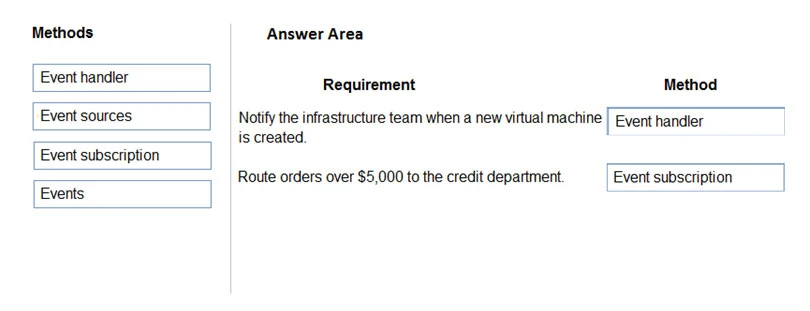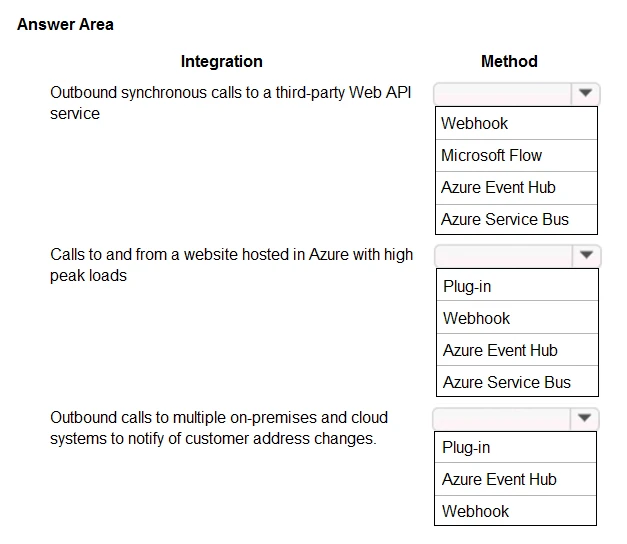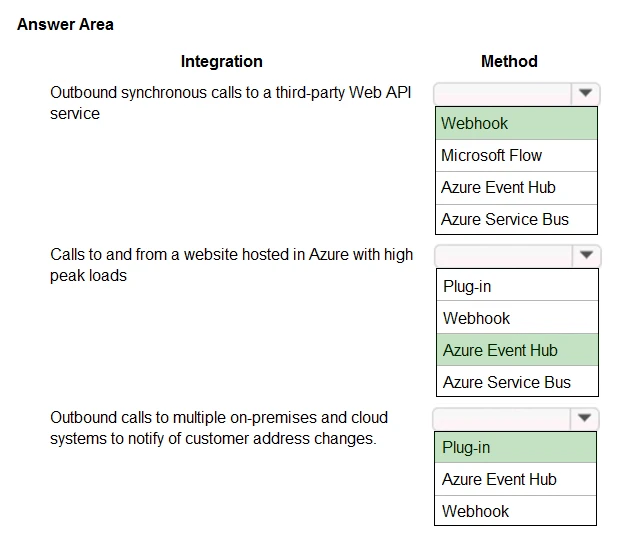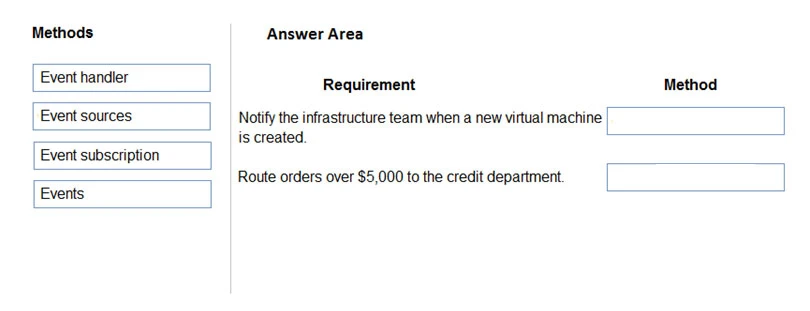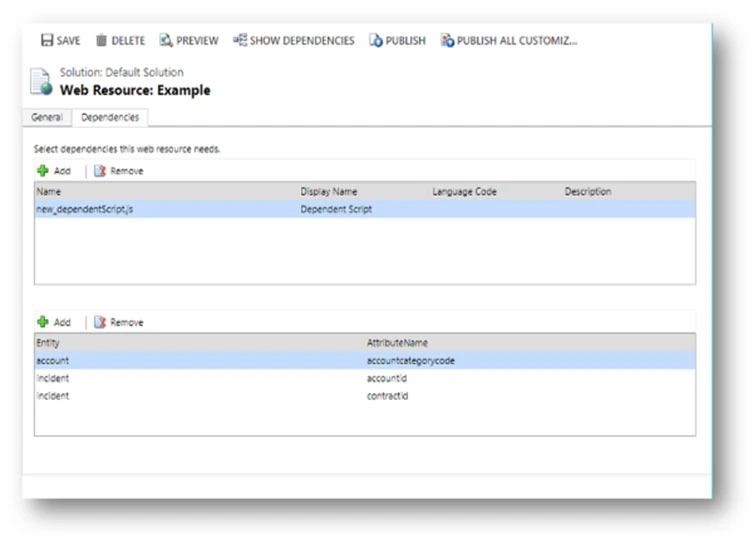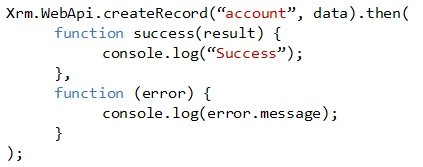Box 1: Event handler -
Event handlers - The app or service reacting to the event.
Box 2: Event subscriptions -
Event subscriptions - The endpoint or built-in mechanism to route events, sometimes to more than one handler. Subscriptions are also used by handlers to intelligently filter incoming events.
Note:
There are five concepts in Azure Event Grid that let you get going:
Events - What happened.
Event sources - Where the event took place.
Topics - The endpoint where publishers send events.
Event subscriptions - The endpoint or built-in mechanism to route events, sometimes to more than one handler. Subscriptions are also used by handlers to intelligently filter incoming events.
Event handlers - The app or service reacting to the event.
Reference:
https://docs.microsoft.com/en-us/azure/event-grid/overview
Create a Technical Design
